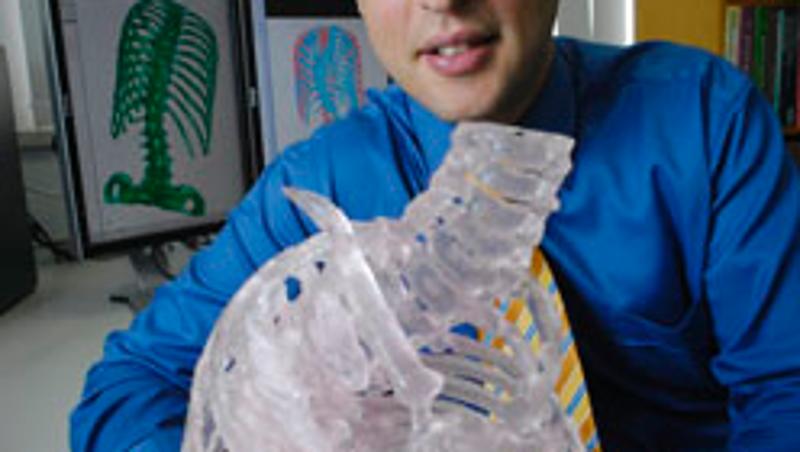
A computer modelling program that allows surgeons to simulate scoliosis surgery so they can design the best procedure before lifting the scalpel is being developed by QUT biomedical engineering researchers.
Queensland University of Technology spine research fellow Associate Professor Clayton Adam said the patient-specific computer models, developed by QUT-based Paediatric Spine Research Group, let surgeons try out different scenarios before they performed an operation to implant a rod in the spine to correct scoliosis.
"Spine surgery is one of the most complicated and painstaking operations because surgeons cannot afford to damage the delicate spinal cord," Professor Adam, a member of QUT's Institute of Health and Biomedical Innovation (IHBI), said.
"Our new computer modelling techniques let surgeons plan the most effective treatment for an individual patient by testing a number of crucial parameters before the surgery.
"By working out the best possible combination beforehand, surgeons can position the implant with confidence and therefore the patient is likely to have fewer complications and a reduced healing time."
Professor Adam said patient-specific computer modelling supported the new keyhole and single-rod surgical procedures that had been developed for straightening the spine.
"This surgery is much less invasive because doctors can now insert a single implant through keyhole incisions in the side of the patient," he said.
"For certain cases, it replaces the traditional 'open' surgery in which two rods were implanted through an incision along the length of the patient's back and left big scars."
He said scoliosis was the most common spinal deformity, affecting 2 to 4 per cent of the population, nine out of 10 of whom are girls in their early teens.
"Scoliosis can cause reduced lung capacity as the spine twists into the right side of the chest cavity, leaving less space for the internal organs.
"However, one of the biggest effects of spinal deformities is on the self image of the patient and their quality of life."
Professor Adam said 130 keyhole, single-rod operations had been performed in Australia.
"To ensure that our computer models are valid, we are carefully comparing the simulation results with clinical data from these scoliosis patients," he said.
The Paediatric Spine Research Group was also studying the spine as a whole and exploring bone at the microscopic level to understand how bone responded to surgical implants.
Media contacts: Niki Widdowson, QUT media officer, 07 3138 1841 or n.widdowson@qut.edu.au.
** High res photo of Dr Adam available for media use.


